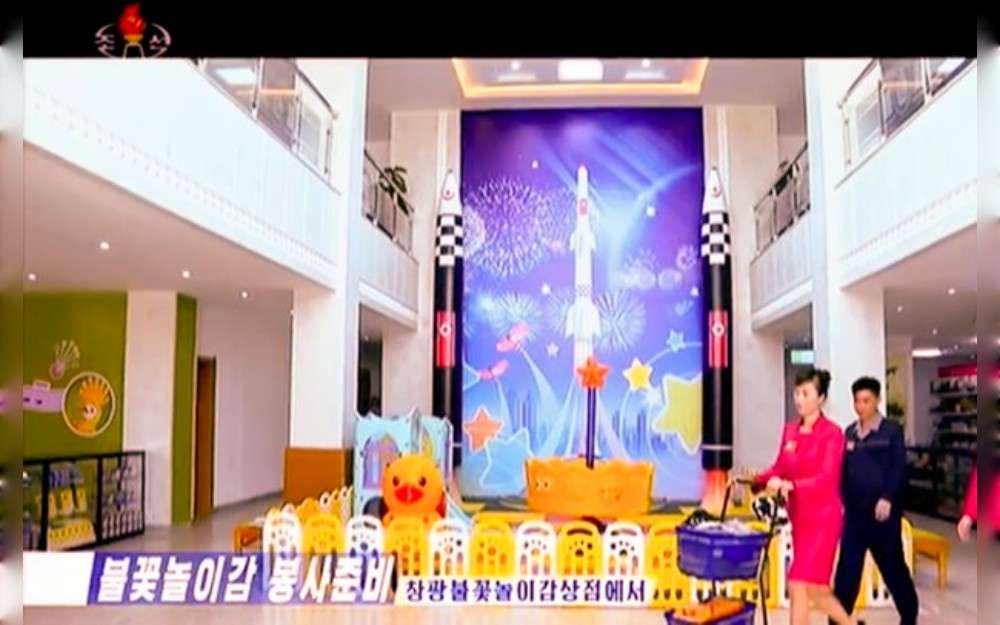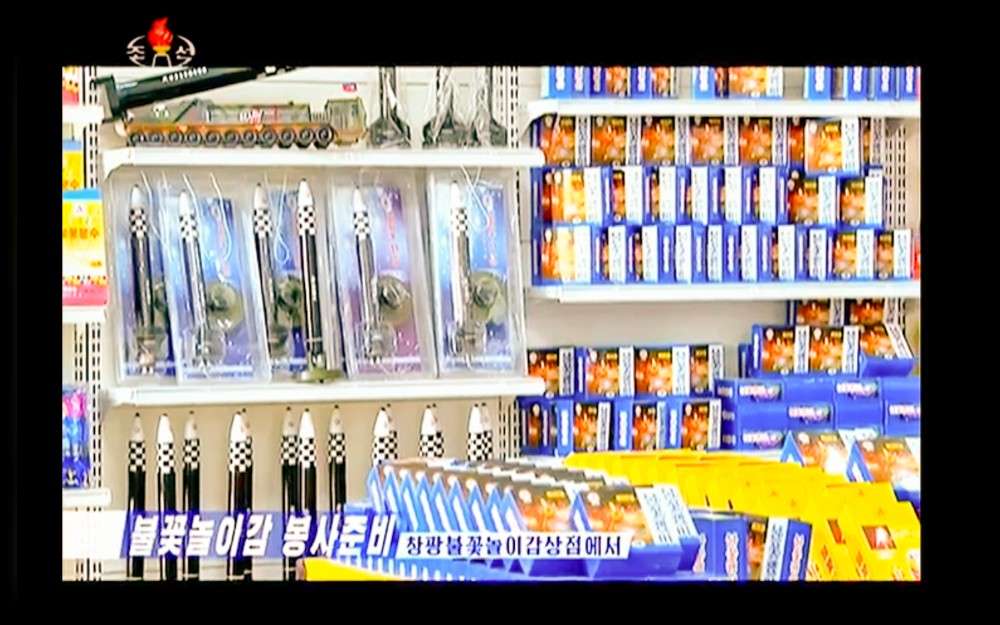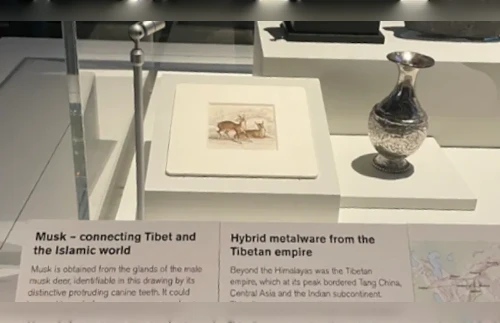Military-themed toys are meant to instill pride and possibly gain public support for arms development, experts say.
By Jamin Anderson for RFA Korean

A fireworks store in North Korea was featured in the country’s state media for its unique products, including fireworks shaped like intercontinental ballistic missiles, or ICBMs.
Experts told Radio Free Asia that the fireworks, shaped like North Korea’s Hwasong-17 ICBM, unveiled in 2020 and first test fired in 2022, are meant to instill national pride among children, and the parents who would buy them.
“Our store carries fireworks that everyone loves, and that teenagers and students enjoy,” a worker at the Changgwang Fireworks Store said on the May 19 Korea Central Television broadcast.
The report showed an entire section of the store with missile-themed fireworks, including a launcher in the shape of a transporter erector launcher vehicle, or TEL.
The store’s military-themed products are clearly aimed at children, as its interior includes colorful pictures of animals on the walls, and a small fenced-off play area for toddlers, flanked by two very large Hwasong-17 models and a mural depicting the missile being launched into a sky full of cartoon stars and bursting fireworks.
Military themed-toys are very common in North Korea, but the country seems to want the people to be on board with dedicating resources and labor to missile and rocket development.

In February 2023, North Korean leader Kim Jong Un’s wife, Ri Sol Ju, was spotted wearing an ICBM-shaped necklace at a banquet commemorating the 75th anniversary of the Founding of the Korean People’s Army.
In February 2024, the country forced residents to buy laminated photos of a reconnaissance satellite rocket launch to display in their homes as a constant reminder of the country’s military achievements.
Instilling pride
The missile-themed displays are an attempt to foster national pride among the people, both through children and their parents, Bruce Klingner, senior research fellow at the Heritage Foundation and a former analyst at the U.S. Central Intelligence Agency, told RFA Korean.
“It reinforces the message that North Korea needs nuclear weapons and missiles because of the U.S. threat,” he said. “And it is a way of explaining away the dire economic conditions that North Korean people suffer from because it’s being blamed on the United States.”
David Maxwell, vice president of the Center for Asia Pacific Strategy, said the displays are an effort by the authorities to try to “ reinforce the legitimacy of North Korea as a military power to show off its nuclear and missile capabilities.”
“It’s an example of the prioritization of resources that the Kim family regime does,” said Maxwell. “It prioritizes enhancing the reputation of the regime over the welfare of the people, while the people suffer the worst lives of really any population in the world today.”
Such militaristic children’s toys were unheard of decades ago, said Kim Su-kyung, who escaped North Korea in 1998 and resettled in the United States.
“When I was young, there were no goods like this,” she said. “We used to play a military game called ‘Kill the Yankee’ during field day at school, but it seems like that has now been upgraded and made into these types of toys.”
She said the public would not be receptive to these toys and would not appreciate the government’s attempts to manipulate public opinion with “useless toys.”
Translated by Claire S. Lee. Edited by Eugene Whong and Malcolm Foster.
“Copyright © 1998-2023, RFA.
Used with the permission of Radio Free Asia,
2025 M St. NW, Suite 300, Washington, D.C. 20036.
https://www.rfa.org.”













